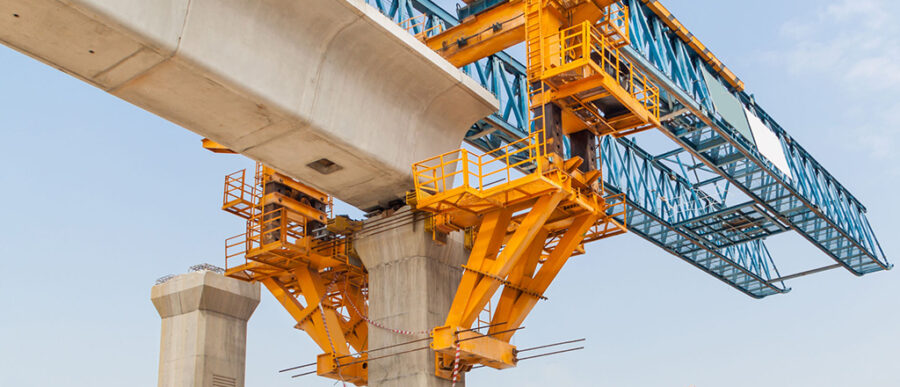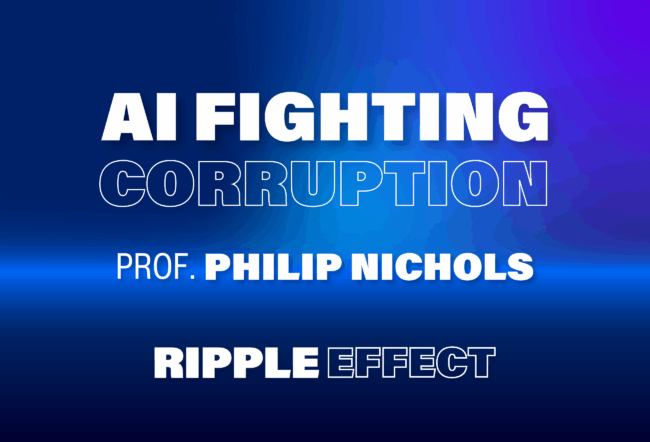Anyone who reads op-ed pages could have noticed a recent shift in economic debate: More and more experts saying that monetary policy has shot its bolt and it’s time to crank up government spending on things like roads and bridges to spur growth. Or, if not for the sake of stimulus, to pay for needed projects while money is cheap.
In an August column headlined “Time to Borrow,” New York Times columnist Paul Krugman, a Nobel economics laureate, argued for massive federal borrowing to pay for roads, bridges and other infrastructure improvements. Presidential candidates Hillary Clinton and Donald Trump have both called for infrastructure spending, as have experts like former Treasury Secretary Larry Summers and economist Alice Rivlin, former vice chair of the Federal Reserve.
“Put these two facts together — big needs for public investment, and very low interest rates — and it suggests not just that we should be borrowing to invest, but that this investment might well pay for itself, even in purely fiscal terms,” Krugman argued. “How so? Spending more now would mean a bigger economy later, which would mean more tax revenue. This additional revenue would probably be larger than any rise in future interest payments.”
Spending borrowed money sounds like blasphemy to deficit hawks, who have long argued government debt is out of control. But fiscal stimulus was part of the federal government’s effort to get out of the Great Recession, and the strategy seems to be making a comeback.
“Yes, I think that’s a fair statement,” says Wharton finance professor Itay Goldstein. “I think there is a growing feeling that monetary policy is not working, or is very limited, or that everything [monetary] has been tried, so fiscal policy is mentioned more often as a potential solution” to spur growth.
With short-term rates near zero — or less than zero with inflation — some experts think the Federal Reserve cannot do much more by cutting rates.
“It seems that monetary policy has been used to the maximum extent possible, and if we want to stimulate growth more we have to do something else and that is why fiscal policy comes up,” says Wharton finance professor Nikolai Roussanov.
Rivlin has argued that the fiscal stimulus enacted in the Great Recession, primarily the $787 billion American Recovery and Reinvestment Act of 2009, proved fiscal strategy to be sound.
“I believe the Great Recession would have been longer and deeper without the stimulus package of 2009,” Rivlin said in a 2015 speech to the National Association for Business Economics. “If the stimulus had been larger and lasted longer, recovery would have been more robust and the Fed might not have found it necessary to do so much quantitative easing.”
More government spending might help now, she argued:“[We] have to make the case for very specific public investments that can be shown to have positive impacts on productivity growth and future prosperity.”
“Monetary policy has been used to the maximum extent possible, and if we want to stimulate growth more we have to do something else and that is why fiscal policy comes up.”–Nikolai Roussanov
Out of Ammunition?
In recent years, though, the chief stimulus strategy has been monetary policy like the Federal Reserve’s efforts to keep interest rates low to encourage borrowing by individuals and businesses to spur the economy.
“I do share the view that the Fed is out of ammunition,” says Steven Fazzari, economics professor at Washington University in St. Louis. “I don’t know that they ever had as much ammunition as they thought.”
Still, plenty of experts think the Fed still has cards to play, and that the economy may well is strengthen on its own.
“I don’t think we need fiscal stimulus, not at this point, the economy is doing fine,” says Mark Zandi, chief economist of Moody’s Analytics, Unemployment is below 5%, and the economy has grown steadily for years, though somewhat sluggishly. Incomes have started to rise while poverty rates have fallen. With the economy at full employment, wages will rise further, Zandi says. And with the 10-year U.S. Treasury note yielding bout 1.75%, he says the Fed does have more room to lower rates if necessary, and in a pinch could resort to more extreme measure like pumping money into the banking system.
Despite the debate on the need for further economic stimulus, there is little disagreement about the need to fix crumbling highways and bridges, to upgrade airports and rail lines, and perhaps even spend on things like transmission lines for wind and solar power.
Krugman argued that the federal government should not pass up an opportunity to borrow for essential projects while interest rates are still low. While the current debt of $19 trillion is a record, and seems frightening, it is not unusually high as a percentage of gross national product, Krugman said, adding that, “federal interest payments are only 1.3% of GDP, low by historical standards.”
So, would borrowing for infrastructure spending pay for itself with new tax revenue from growth?
Like Krugman, Summers has argued in a Washington Post column responding that it would: “Imagine an infrastructure project that costs $1 and yields a modest five cents a year in real return forever, in terms of higher GDP. The project thus has a 5% social rate of return. Tax collections would, by extension, rise by about 1.5 cents a year. With the indexed bond market suggesting federal real borrowing costs that are negative for 10 years and 50 basis points for 30 years, the government will come out ahead on the investment.”
“I don’t think we need fiscal stimulus, not at this point, the economy is doing fine.”–Mark Zandi
Putting it another way, Fazzari says that spending $2 could produce $1.50 in additional economic activity, with about a third of that returning to the government as tax revenue — more than enough to service the debt. In addition, that spending could enhance the economy’s long-term potential, he says. Given market expectations for low interest rates for some time, along with a stable debt-to-GDP ratio, a fiscal stimulus program seems like a good bet, he concludes.
Will Future Taxpayers Be Stuck with the Check?
But Joseph Minarik, chief economist of the Office of Management and Budget during the Clinton Administration, argues such views are too optimistic because they focus on paying interest on the debt, not principal. That means sticking future taxpayers with the check.
“Ironically, if Krugman’s program works, it will undermine itself in this respect, Minarik said in an analysis for the Committee for Economic Development, a non-partisan group where he is research director. “If economic growth accelerates, inflation will rise, too, and the cost of servicing these bonds will go up.”
Minarik noted that a third of the debt is in bonds that mature in less than a year, and another third in ones maturing in less than five years. Maturing bonds are paid off by selling new ones. That means the interest costs on the debt could jump over time, like payments on a variable-rate mortgage.
But if rate hikes are a concern, said Krugman, the government could turn to long-term debt like 30-year inflation-protected bonds, currently costing the government next to nothing. But Minarik noted that the small size of some recent Treasury bond auctions seem to argue that there aren’t enough investors willing to tie money up in low-yielding bonds for three decades.
Fazzari points out that rates are likely to rise only if the economy heats up, producing more tax revenue to support debt service. “The reason interest rates would be higher is the economy really gets its mojo back.”
Even if Washington could come together to support borrowing for infrastructure spending, it’s not a given that would boost the economy. Most infrastructure spending is done by the states, not the federal government, says Wharton finance professor Robert P. Inman. His research has shown that governors often hoard federal infrastructure grants, and then parcel it out over time on politically popular projects that don’t necessarily propel economic growth. The danger is that much of the money is spent years later, after the economy has already recovered, Inman says.
History, he says, shows that the quickest stimulation — and best course during a recession — comes from money for the poor, like food stamps or extended unemployment benefits, because it gets spent right away and ripples through the economy. ”They need to eat, they need housing, they need health care.”
Spending on bridges and roads, while not an immediate shot in the arm, can indeed help stimulate the economy over the long term, he adds, so long as it is focused on projects that raise productivity. Replacing the I-35W bridge in Minneapolis that collapsed in 2007 would indeed raise productivity, by making travel quicker for commuters and truckers, Inman explains. Generally, he says, urban projects are more likely to pay off than rural ones, especially in depressed areas, but it can be tricky for the federal government to set criteria that conflict with the state government’s political priorities, he says.
No Immediate Payoff
Goldstein notes, too, that many infrastructure projects take a long time to plan. “It takes a commitment and the effects are not immediate.”
Minarik considered this a serious flaw in the infrastructure-spending rationale, pointing out that most of the idled construction workers presumably ready to go to work today are in the housing industry, not heavy construction like road building. Retraining could be slow, raising the danger that all this spending would backfire by helping to overheat an economy that has recovered in the meantime.
“Even without thinking about fiscal stimulus you would like to do infrastructure.”–Itay Goldstein
Goldstein sides with those who think infrastructure spending has a good chance of generating enough growth to pay for itself, and adds that these improvements are needed anyway. Something like high-speed rail along the Boston-Washington corridor or connecting Chicago to the East Coast would unquestionably make commerce more efficient, he observes. And he says many improvements would have non-economic payoffs as well, like better roads giving commuters more time with their kids.
“Even without thinking about fiscal stimulus you would like to do infrastructure,” he says.
However, Roussanov describes another worry, what economists call “crowding out,” when sale of government bonds soaks up money investors might otherwise invest in private business through stock and bond purchases. Also, he adds, government borrowing creates pressure for higher taxes later.
Minarik favored infrastructure spending but only as part of a long-term, disciplined plan that he conceded is unlikely in today’s divisive climate, dominated by short-term thinking. “We have painted ourselves into a fiscal corner. Catch-22 is upon us. We cannot risk larding on the debt for spending that might help the economy. Taking on the massive debt that we already have has restricted our options.”
So even among economists, let alone politicians, few see fiscal stimulus in current conditions as a slam-dunk. “Its a highly controversial issue, fairly ideological,” Goldstein says. “People take extreme views on both sides.”



